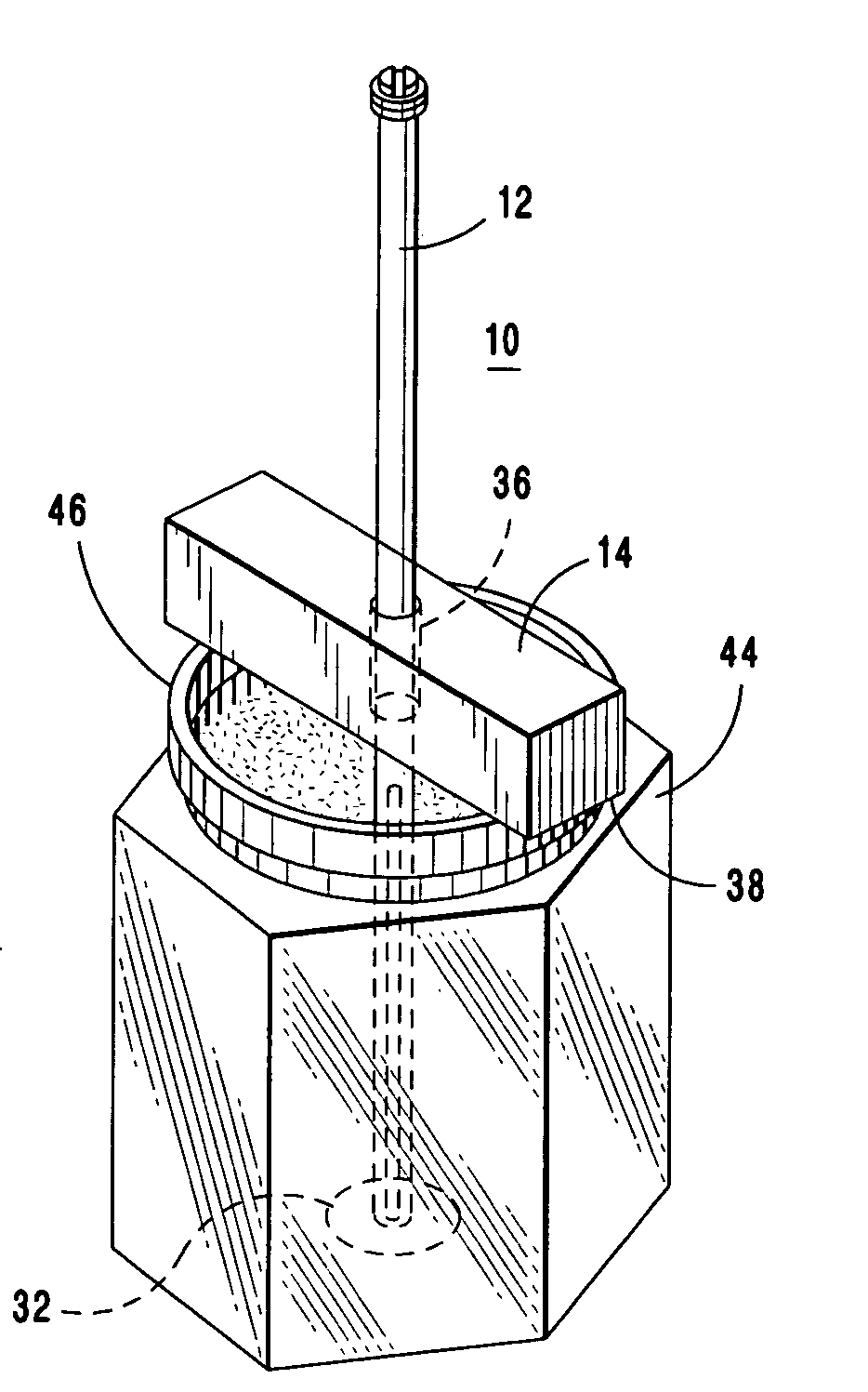Candle wick straightening method and apparatus
a straightening method and apparatus technology, applied in the field of candles, can solve the problems of inability to keep the wick straight, time-consuming procedure, and no method or reusable device in the related art in this field, and achieve the effects of simple and easy use, low cost, and faster work
- Summary
- Abstract
- Description
- Claims
- Application Information
AI Technical Summary
Benefits of technology
Problems solved by technology
Method used
Image
Examples
Embodiment Construction
[0033]The following detailed description is of the best mode or modes of the invention presently contemplated. Such description is not intended to be understood in a limiting sense, but to be an example of the invention presented solely for illustration thereof, and by reference to which in connection with the following description and the accompanying drawings one skilled in the art may be advised of the advantages and construction of the invention.
[0034]Typically, in manufacturing candles in a jar-type container, such as a glass jar having an inner wall and a floor or closed bottom, first the wick is attached on one end to a wick holder or clip, which is then situated centrally on the interior bottom of the container. Next a so-called fuel, which is formed of a wax such as paraffin, is heated and is poured into the jar or container so that the wick is surrounded by the fuel. Paraffin wax is a heavy hydrocarbon that is a solid at room temperature, but easily melted by heat, and is ...
PUM
| Property | Measurement | Unit |
|---|---|---|
| force | aaaaa | aaaaa |
| shapes | aaaaa | aaaaa |
| sizes | aaaaa | aaaaa |
Abstract
Description
Claims
Application Information
 Login to View More
Login to View More - R&D
- Intellectual Property
- Life Sciences
- Materials
- Tech Scout
- Unparalleled Data Quality
- Higher Quality Content
- 60% Fewer Hallucinations
Browse by: Latest US Patents, China's latest patents, Technical Efficacy Thesaurus, Application Domain, Technology Topic, Popular Technical Reports.
© 2025 PatSnap. All rights reserved.Legal|Privacy policy|Modern Slavery Act Transparency Statement|Sitemap|About US| Contact US: help@patsnap.com



